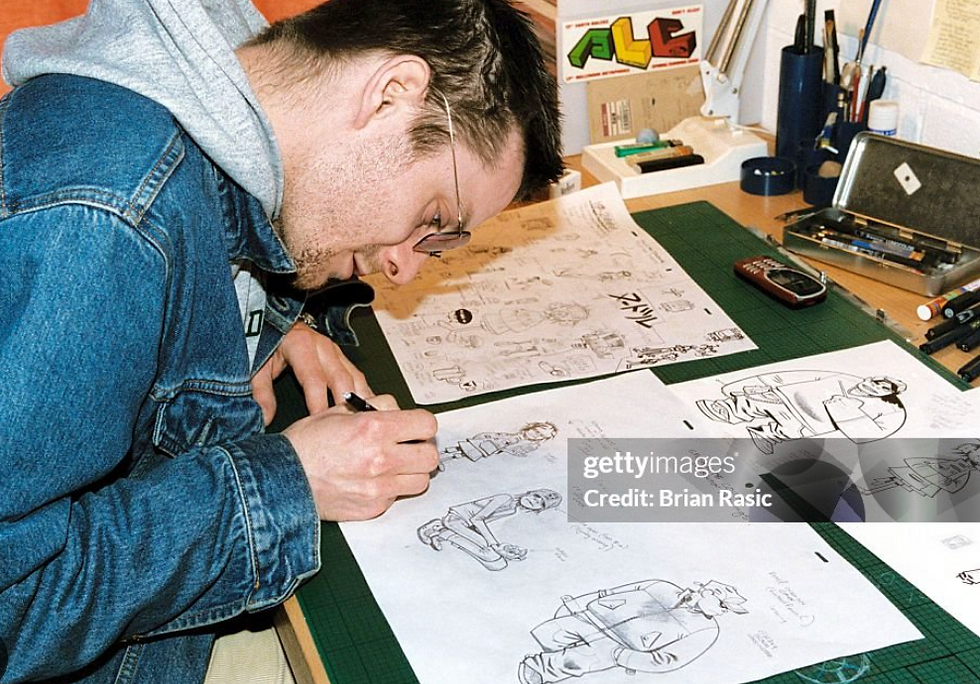- The Gooch

- Jan 15
- 7 min read
Updated: Apr 2
The Complete Story of Lynyrd Skynyrd: Southern Rock’s Legendary Journey
Lynyrd Skynyrd’s story is one of humble beginnings, meteoric success, devastating tragedy, and resilient rebirth. Over the decades, they became the quintessential Southern rock band, combining gritty guitar riffs, soulful lyrics, and anthemic melodies to create a lasting legacy in the world of music.

Bar Band Beginnings and an Unforgettable Name
Lynyrd Skynyrd started in Jacksonville, Florida, in 1964 when a group of teenagers with a shared love for music—Ronnie Van Zant, Gary Rossington, Allen Collins, Bob Burns, and Larry Junstrom—decided to form a band. Initially performing under various names like "My Backyard" and "The Noble Five," they honed their craft playing bars, dances, and small venues.


The band's name came about as a cheeky nod to Leonard Skinner, a strict high school gym teacher notorious for enforcing the school’s no-long-hair policy. This rebellious choice of name encapsulated the band’s Southern pride and defiance.


Rise to Fame: Southern Rock Takes the Spotlight
By the early 1970s, Lynyrd Skynyrd had established themselves as a powerful live act. Their big break came when they caught the attention of Al Kooper, a musician and producer who signed them to his label, Sounds of the South. In 1973, they released their debut album, Pronounced 'Lĕh-'nérd 'Skin-'nérd, which featured iconic tracks like "Free Bird" and "Simple Man."


“Free Bird” became an enduring anthem of freedom and individuality, with its soaring guitar solo and heartfelt lyrics captivating audiences.
Influences: The band drew heavily from blues, country, and Southern traditions, inspired by the likes of The Allman Brothers Band, Cream, and blues legends like Robert Johnson and Muddy Waters.


Their second album, Second Helping (1974), catapulted them to stardom with hits like "Sweet Home Alabama," a playful rebuttal to Neil Young’s criticism of the South. The track became an anthem of Southern pride and one of their most iconic songs.
By the mid-70s, Lynyrd Skynyrd was at the forefront of the Southern rock movement, alongside contemporaries like The Allman Brothers Band, The Marshall Tucker Band, and ZZ Top.


World Tours and Commercial Success
Lynyrd Skynyrd quickly became a touring powerhouse, captivating audiences worldwide with their high-energy performances and tight musicianship. Albums like Nuthin’ Fancy (1975), Gimme Back My Bullets (1976), and Street Survivors (1977) solidified their reputation as rock giants.


Their triple-guitar attack—featuring Gary Rossington, Allen Collins, and Ed King (later replaced by Steve Gaines)—was a hallmark of their sound, blending intricate harmonies with raw power.
Tracks like “Gimme Three Steps,” “Call Me the Breeze,” and “Saturday Night Special” showcased their ability to craft hits that resonated with fans across genres.


The Tragic Crash That Shattered the Band
In October 1977, just three days after the release of Street Survivors, tragedy struck. The band’s chartered plane ran out of fuel and crashed in Mississippi. The accident claimed the lives of lead singer Ronnie Van Zant, guitarist Steve Gaines, backing vocalist Cassie Gaines, and others, while several members were seriously injured.


The crash marked the end of Lynyrd Skynyrd’s classic era. The tragedy sent shockwaves through the music world and left fans mourning the loss of one of rock’s brightest talents.


Rebirth: Johnny Van Zant and a New Era
After a decade-long hiatus, surviving members reunited in 1987 with Ronnie’s younger brother, Johnny Van Zant, stepping in as lead vocalist. Johnny brought his own style while honoring his brother’s legacy, and the band’s Tribute Tour was a resounding success.


Over the years, Lynyrd Skynyrd released new albums, including 1991 (1991) and God & Guns (2009), blending the classic Southern rock sound with contemporary elements. They continued to tour extensively, performing their timeless hits to new generations of fans.


Losses Along the Way
Despite their resurgence, the band faced continued heartbreak with the deaths of key members:
Allen Collins (1990): Guitarist and co-writer of many classics, passed away due to pneumonia complications.
Leon Wilkeson (2001): Bassist, known for his flamboyant style and intricate playing, died from chronic health issues.
Billy Powell (2009): The band’s pianist, whose classical training added depth to their sound, passed away from a heart attack.
Gary Rossington (2023): The last remaining original member, whose soulful guitar work defined the band’s sound, passed away, marking the end of an era.

Despite these losses, Lynyrd Skynyrd has persevered, with a rotating lineup of talented musicians keeping the spirit of the band alive.


Contributions of Additional Members
Throughout their history, Lynyrd Skynyrd welcomed numerous musicians who added their unique flavors to the band’s sound:
Billy Preston (Keyboards): Contributed to live performances with his soulful playing.
Rickey Medlocke: Former drummer turned guitarist, rejoined in the 1990s and became a key figure in the band’s modern era.
Cindy Blackman Santana (Drums): Occasionally collaborated live, showcasing her technical prowess.

Why Lynyrd Skynyrd Endures
Lynyrd Skynyrd’s enduring appeal lies in their authenticity. They stayed true to their roots, blending blues, country, and rock into a sound that resonated with millions. Their songs, filled with heartfelt lyrics and powerful melodies, transcend time and place.
The band’s influence can be heard in countless artists across rock, country, and even pop music. From Kid Rock to Jason Aldean, their legacy continues to shape modern music.


A Legacy of Southern Pride and Resilience
Lynyrd Skynyrd’s journey from a Jacksonville bar band to rock legends is a testament to their talent, perseverance, and enduring appeal. Despite tragedy and loss, they’ve continued to share their music with the world, ensuring that the spirit of “Free Bird” and “Sweet Home Alabama” will live on forever.

As they continue to tour and inspire, Lynyrd Skynyrd remains a symbol of Southern rock at its finest—a legacy of resilience, freedom, and timeless music.
How Lynyrd Skynyrd Made Hit After Hit, Achieved Iconic Status, and Influenced Generations
Lynyrd Skynyrd’s path to becoming one of the most popular and enduring rock bands of all time lies in their ability to craft authentic, relatable, and electrifying music. Combining Southern storytelling, raw emotion, and undeniable musical talent, the band defined an era while influencing countless artists and ensuring their music remained timeless.
The Formula Behind the Hits
Relatable Southern Themes:Lynyrd Skynyrd’s songs captured the heart and soul of the South. Whether celebrating their roots in “Sweet Home Alabama,” reflecting on freedom and individuality in “Free Bird,” or narrating gritty tales like “Gimme Three Steps,” their music connected deeply with audiences.
Masterful Songwriting:
Ronnie Van Zant, the band’s lead vocalist and lyricist, had a knack for storytelling. His lyrics spoke to universal truths—freedom, love, struggle, and pride—making the songs resonate far beyond the Southern U.S.
The band’s guitar-driven sound, led by Gary Rossington, Allen Collins, and later Steve Gaines, brought dynamic solos and memorable riffs that became iconic. Tracks like “Tuesday’s Gone” and “Simple Man” showcase their ability to balance power with emotion.

Collaborative Excellence:Each member contributed their unique talents, from Billy Powell’s classical-inspired piano flourishes to Leon Wilkeson’s melodic basslines and Bob Burns’ driving drumbeats. This cohesion made their sound both distinctive and adaptable.
Blending Genres:By fusing rock with blues, country, and gospel influences, Lynyrd Skynyrd appealed to a broad audience. Their versatility allowed them to create anthems, ballads, and bluesy rockers that stood out on radio and concert stages.
Why They Became So Popular
Relatable Identity:Lynyrd Skynyrd embraced their Southern heritage unapologetically, creating music that celebrated the culture, struggles, and pride of the working class. This authenticity made them heroes to fans who saw themselves in the music.
Electrifying Live Performances:Known for their high-energy shows and the legendary “Free Bird” solos that stretched for 10 minutes or more, Lynyrd Skynyrd became a must-see live act. Their stage presence and connection with the crowd elevated their popularity.
Hits That Transcended Time:Songs like “Sweet Home Alabama” became cultural touchstones, while “Free Bird” solidified itself as one of the greatest rock ballads of all time. These tracks, along with their deeper cuts, are still played on classic rock radio stations worldwide.
Universal Themes:Their music spoke to timeless themes of freedom, rebellion, love, and loss, making it accessible to fans across generations.
Who They Specifically Influenced
Lynyrd Skynyrd’s impact rippled across genres, inspiring countless artists:
Country Music:
Modern country artists like Jason Aldean, Eric Church, and Zac Brown Band have cited Lynyrd Skynyrd as a major influence, particularly their storytelling and Southern pride.
The Southern rock elements in today’s country music owe much to Skynyrd’s groundbreaking sound.
Rock Bands:
Bands like Blackberry Smoke, The Black Crowes, and Gov’t Mule continue the Southern rock tradition that Skynyrd popularized.
Hard rock groups like Guns N’ Roses and Metallica have drawn inspiration from Skynyrd’s raw, unfiltered energy.
Crossover Artists:
Even outside rock and country, Lynyrd Skynyrd’s influence can be seen in artists like Kid Rock, who blends rap, rock, and country with clear nods to Skynyrd.

Why Their Music is Timeless
Universality:Skynyrd’s songs explore themes that remain relevant—freedom, resilience, pride, and love. The deeply human stories in their lyrics transcend specific time periods.
Signature Sound:Their music is a perfect blend of technical mastery and emotional depth, ensuring it remains fresh and engaging even decades later. The three-guitar attack, combined with Powell’s piano and Van Zant’s soulful vocals, created a sound that’s instantly recognizable and unforgettable.
Cultural Significance:Songs like “Sweet Home Alabama” have become part of the cultural fabric, instantly evoking a sense of place and identity.
Live Legacy:Lynyrd Skynyrd’s commitment to live performances has kept their music alive for new generations. Their ongoing tours introduce younger audiences to their classic sound.
Timeless Anthems:Tracks like “Free Bird” and “Simple Man” resonate with listeners of all ages, offering messages of hope, resilience, and individuality that never go out of style.
Still Remember me
Lynyrd Skynyrd didn’t just make music; they created an enduring legacy. Their ability to produce hit after hit, their authenticity, and their influence on country, rock, and pop genres make them one of the most iconic bands of all time. Even after decades of tragedy and triumph, their music continues to inspire and unite listeners worldwide, ensuring that their Southern rock legacy remains unshaken.

























































































%20NEW-03.png)







